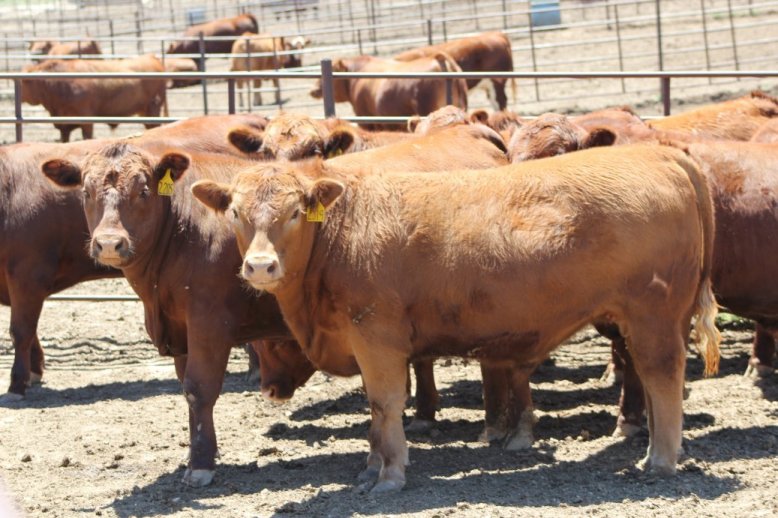
By Matt Spangler, UNL Extension Beef Genetics Specialist
There is no doubt that feed costs are a substantial portion of the total costs associated with growing animals. Anderson and others (2005) estimated feed costs accounts for 66% of costs in calf-fed systems and 77% in yearling finishing systems. The ability to improve the utilization of nutrients has tremendous potential to improve profitability. Fox and others (2001) estimated that a 10% improvement in performance (gain) would increase profit by 18%, while a 10% improvement in efficiency could improve profit by upwards of 43%. Weaber (2011) estimated that a 10% improvement in feed efficiency (assumed to be a 2 lb. reduction in RFI) across the entire feedlot sector would equate to $1.2 Billion in reduced feed costs.
Although progress has been made in feed conversion (F:G) over the past decade, it has been minimal relative to the progress that other species, such as poultry, have made (250% increase in feed efficiency since 1957). Iowa closeout data suggests a 0.047 lb./yr. decrease in F:G from 1978-1992 and from 1988-2002 midwestern closeout data suggests the change is slightly less (0.033 lbs./yr. decrease). Advancements in dietary regimes and technology (implants and feed additives) have made substantial differences, but direct genetic selection for efficiency remains an untapped source of potential improvement.
What Role Does Genetics Play?
Efficiency metrics are at least moderately heritable and thus genetic change through selection is feasible. Table 1 below depicts the heritability (on the diagonal) and genetic correlations (on the off diagonal) of several feed efficiency metrics. Table 2 shows the expected response to selection using several selection criteria. From table 2 it is clear that an economic index approach to selection is the most desirable.
Table 1. Genetic parameters for feed efficiency metrics. http://go.unl.edu/qy6
Table 2. Expected response (selection intensity*lbs) to selection based on several criterion. http://go.unl.edu/0b3
Why a Genomics Approach?
Genomic information, in the form of Single Nucleotide Polymorphisms (SNP), has always held the promise to increase the accuracy of Expected Progeny Differences (EPD). This promise has finally been realized for those breeds that incorporate this information into their EPD calculations. For those breeds that have not, genomic information for complex traits (those controlled by many genes) is available to producers in a disjoined context and is published separately from EPD.
One key advantage to genomic predictors (i.e. Molecular Breeding Values (MBV)) is that this information can be garnered early in the life of the animal thus enabling an increase in the accuracy of EPD particularly on young animals, which have not yet produced progeny. However, the benefit of the inclusion of genomic predictions into EPD estimates is proportional to the amount of genetic variation explained by the genomic predictor (Thallman et al., 2009).
Marker-Assisted EPD were first estimated for carcass traits and then evolved to other production traits for which EPD already existed. This is due to the need for phenotypes to train (process of developing prediction equations using significant SNP) the genomic predictions. Consequently, genomic tests for “novel” traits such as different measures of efficiency or disease susceptibility require a significant effort in order to build large resource populations of animals with both phenotypes and genotypes. These two particular suites of traits (feed efficiency and Bovine Respiratory Disease) are currently the focus of two integrated USDA projects. In these two cases, use of genomic tools could have an economic advantage over routine collection of very costly phenotypes.
Current efforts
A current multi-institutional integrated effort to develop and deploy selection tools to improve the efficiency of feed utilization in growing cattle is currently underway (http://www.beefefficiency.org). Since feed intake phenotypes are expensive to measure and a genomics approach is logical, this project seeks to develop genomic predictors for feed intake/efficiency using dense SNP panels (50,000 and 770,000 SNP). The project also plans to dissect regions of the bovine genome that harbor genetic variants that explain relatively large portions of the genetic variation for these traits in an effort to discover genes that control the underlying mechanisms that make animals more efficient. To do this requires the collection of feed intake records from thousands of animals that are genotyped with either the 50K or 770K SNP assays across multiple breeds in order to develop genomic predictors that are accurate and robust across cattle populations.
A unique, and critical, component of the current project is the integrated nature of the research program. One part of the integrated component is a large field demonstration that includes 24 seedstock partners from 7 breeds and one large commercial ranch. From this field demonstration resource, sires from collaborating seedstock herds will generate progeny that will be genotyped and have individual feed intake collected such that research findings can be evaluated using producer collaborators. Furthermore, half-sib replacement females will be evaluated based on reproductive performance and estimates of the relationship between feed efficiency in growing animals and reproductive success will be estimated.
The ability to select for improved feed utilization is exciting and will be enabled by genomic tools. However, improvement of efficiency is inherently a multiple-trait issue and thus the development of indexes and utilization of them to select for the most profitable animals in critical.
For more UNL Beef information go to http://beef.unl.edu